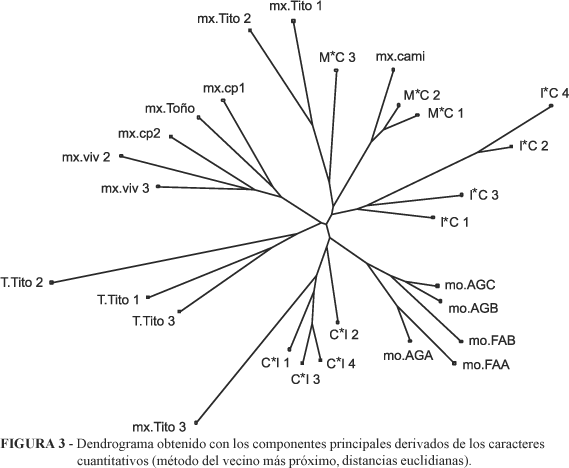Morphological variation was studied in eight accessions from the three most common cultivated and wild species of banana passion fruit in the Cauca Valley, Passiflora tripartita var. mollissima (curuba de Castilla), P. tarminiana (curuba india) and P. mixta (curuba de monte), and 11 of their hybrids, using the principal component analysis and neighbor joining cluster analysis on 105 qualitative and quantitative traits. The seven principal components explain 84% of the total variance. The principal component and cluster analyses clearly show the groups accessions by species. Two subgroups are distinguished within P. mixta, one with little pubescence, representative of the most common wild type, and a very pubescent one, with characters associated with domestication, such as yellowish fruit and colored pulp, and a wider morphological variation. Their position in the different classification strongly suggests a spontaneous introgression between P. mixta and Passiflora tripartita var. mollissima. The hybrids take an intermediate position between the parental species, but closer to the maternal parent, revealing a maternal effect on vegetative and floral traits. The first analyses of their fruit show intermediate characteristics in shape, color, and tolerance to anthracnose.
morphological characterization; genetic diversity; germplasm enhancement; anthracnose






